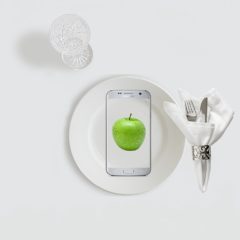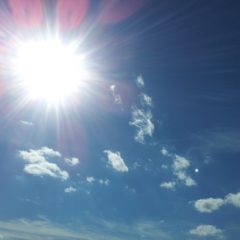Traditional Chinese Medicine has a very long, rich history that has survived and thrived for thousands of years. While this medicine continues to evolve, many of the concepts that were in practice centuries ago are still in use today.
Historians believe that Chinese medicine began as a way to treat conditions in the body involving heat, such as fever or infections. It’s believed that early practitioners used sharpened stones to drain infections or to bleed points on the body to reduce fevers. Some of the most important texts on Chinese medicine written centuries ago describe the stages of fever-related illnesses with very specific ways to treat each stage. These texts give us insight into the earliest use of Chinese medicine, as well as theories that are the foundation of acupuncture as it’s practiced today.
The early stone points became obsolete with the discovery of metallurgy. When early practitioners began using metal, the points became finer and sharper, ultimately evolving into the acupuncture needles that we use today. While acupuncture was practiced throughout China, other modalities developed regionally. In the north of China, where the weather is cold and dry, the use of moxabustion was developed. Moxabustion is a method of warming parts of the body, usually acupuncture points, with burning herbs. It was used for illnesses that were cold in nature, such as arthritis which is aggravated by cold weather. Today moxabustion is still used in the clinic by burning the herb artemesia near specific points of the body to achieve a warming effect. Sadly, many acupuncturists use other warming methods, because moxabustion smells strongly like marijuana and is very penetrating, which poses a problem in most modern office buildings.
With its warmer climate, Southern China was the origin of a different kind of healing method. The temperate climate and fertile soil in the South is ideal for thousands of varieties of trees and plants to flourish. As a result, herbal medicine developed in the South, and over the centuries spread throughout China. Today Chinese herbal medicine is an important and commonly used treatment method.
Much of what we know about Chinese medicine today comes from ancient texts that were written by practitioners of acupuncture or herbalists hundreds and sometimes thousands of years ago. It is interesting to note that the ancients did not perform dissection in order to understand the human body. Instead, they observed the body and relationships between various bodily functions, the seasons, foods, emotions and the universe in general. Over the centuries, the body of knowledge that is Chinese medicine continued to grow as royal physicians and rural practitioners alike shared successful methods of treatment.
Even today Chinese medicine continues to evolve as practitioners share their clinical successes. However, unlike Western medicine where a new theory often disproves what was previously known, new ideas in Chinese medicine are simply considered a new layer of understanding. As a result, Chinese medicine is constantly evolving, but the ancient ideas upon which the medicine was built are still considered the foundation. They are to be studied and revered as such.
Excerpted from the book, Simple Steps: The Chinese Way to Better Health.



